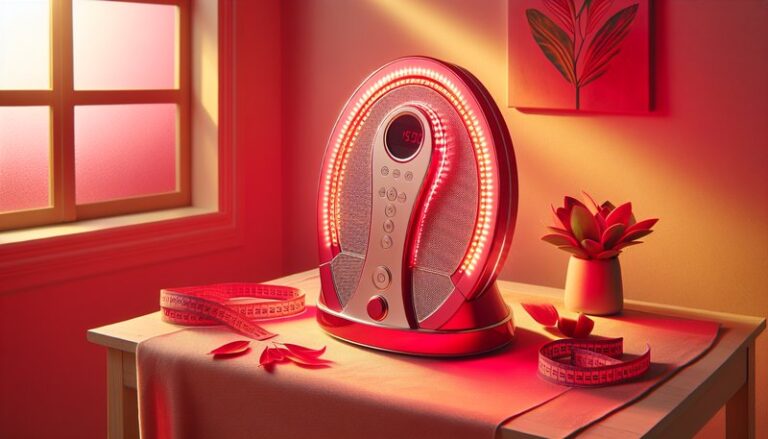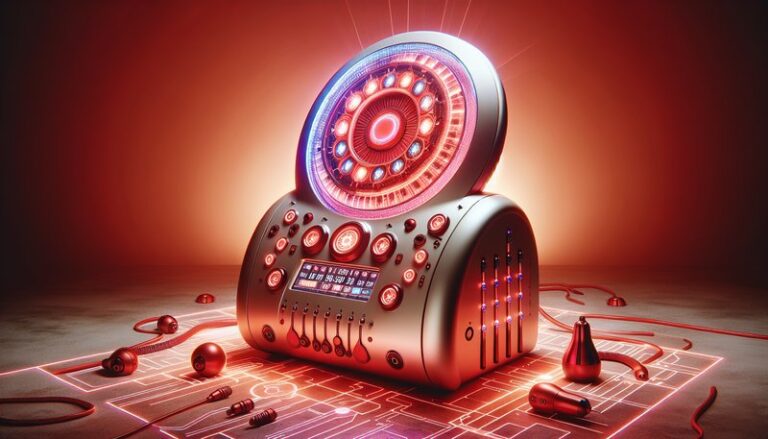What Does Red Light Therapy Do For Muscles?
Are you struggling with muscle recovery, pain, or inflammation? Red light therapy might be the solution you’re looking for.
This article will delve into the impact of red light therapy on muscle recovery and health, detailing its benefits, practical applications, and considerations worth noting. By the end, you’ll have a comprehensive understanding of how this innovative therapy can support your muscle health.
Key Takeaways
- Red light therapy enhances muscle recovery by improving blood circulation and reducing inflammation.
- It can alleviate pain and stiffness, making it a great adjunct to traditional post-workout recovery methods.
- This non-invasive therapy is backed by scientific research and used in both clinical and fitness settings.
What is Red Light Therapy?
Red light therapy (RLT), also known as low-level laser therapy (LLLT), is a non-invasive treatment that uses specific wavelengths of light, typically between 600 to 1,000 nanometers. This light penetrates the skin and is absorbed by cells, promoting various biological processes.
First utilized in the 1960s for wound healing, RLT has gained popularity in recent years, particularly among athletes and individuals seeking alternative methods for muscle recovery and pain relief. By stimulating mitochondria—the powerhouse of the cell—red light therapy enhances cellular energy production, leading to improved healing and rejuvenation.
The Mechanism Behind Red Light Therapy
Red light therapy works through a process known as photobiomodulation. When cells absorb red light, they produce more ATP (adenosine triphosphate), which fuels cellular functions and aids in muscle recovery. Additionally, RLT helps reduce oxidative stress and inflammation, essential for muscle repair post-exercise.
What are the Benefits of Red Light Therapy?
Red light therapy offers numerous advantages for muscle health and recovery. Below are some of its primary benefits:
Enhanced Muscle Recovery
By increasing blood flow and promoting the healing of muscle tissues, red light therapy significantly accelerates muscle recovery following strenuous exercise. Many athletes report reduced soreness and improved performance after using RLT.
Pain Reduction
RLT has shown promise in reducing discomfort associated with muscle strains, joint pains, and conditions like arthritis. Scientific studies suggest that light therapy can effectively decrease pain by modulating inflammation and promoting tissue repair.
Improved Range of Motion
Regular use of red light therapy can enhance flexibility and range of motion in the joints. This is particularly beneficial for athletes or individuals undergoing rehabilitation, as it aids in restoring normal movement patterns without discomfort.
Additional Considerations
- Enhanced collagen production which aids in muscle and tendon health.
- Potential boost in muscle strength and endurance.
- Non-invasive, with minimal side effects compared to pharmaceutical interventions.
Is it Possible to Use Red Light Therapy for Muscle Recovery?
Absolutely! Red light therapy is effective for muscle recovery and can be seamlessly integrated into your post-workout routine. Whether you’re a seasoned athlete or a casual gym-goer, RLT can provide substantial advantages without significant drawbacks.
What are the Advantages of Using Red Light Therapy?
Using red light therapy can offer numerous benefits:
Non-Invasive Treatment
Unlike many medical procedures or medications, RLT is non-invasive, making it a safe and convenient option to add to your recovery regimen.
Convenience and Accessibility
With the development of portable devices, red light therapy can be easily accessed at home or in a fitness setting, allowing for flexibility in treatment times.
Minimal Side Effects
RLT is generally considered safe, with few documented side effects, especially compared to corticosteroids or surgical interventions for muscle pain and recovery.
What are the Disadvantages of Using Red Light Therapy?
While the advantages are considerable, there are some potential drawbacks:
Cost of Equipment
High-quality red light therapy devices can be expensive, which may pose a barrier for some users. However, many clinics offer sessions that can mitigate this issue.
Variable Results
Individual responses to red light therapy may vary. Some may experience significant relief, whereas others may see minimal improvement.
Treatment Duration
RLT typically requires multiple sessions over a period for optimal results, which may demand time commitment and consistent use.
What are the Things to Consider Before Using Red Light Therapy?
Before beginning RLT, consider the following factors:
Consultation with a Healthcare Provider
Always consult a healthcare professional before starting any new therapy, especially if you have underlying health conditions or are on medications.
Understanding Your Specific Goals
Identify what you hope to achieve with RLT. Setting clear goals can help tailor your therapy to meet your needs effectively.
Selecting the Right Device
Consider the quality and specifications of the device you choose. Research different options to ensure you’re investing in a reliable product.
Additional Considerations
- Review scientific studies to understand the efficacy of RLT for your particular condition.
- Allow time for your body to respond; results may vary depending on the intensity and frequency of treatments.
- Ensure proper safety measures when using at-home devices, such as protection for your eyes.
What are the Alternatives to Red Light Therapy?
If red light therapy doesn’t seem like the right fit for you, there are various alternative recovery methods worth considering:
Cryotherapy
Utilizing extreme cold to reduce inflammation and promote healing, cryotherapy is a popular post-exercise recovery method.
Explore the topic in Can Red Light Therapy Aid Weight Loss?
Read the thorough analysis Duration of Red Light Therapy?
Chiropractic Care
Chiropractors focus on musculoskeletal health and can provide treatment for muscle pain and alignment issues.
Massage Therapy
Regular massages can enhance circulation, reduce muscle tension, and aid in recovery.
Additional Alternatives
- Acupuncture: Can relieve pain and promote overall well-being.
- Foam Rolling: A self-myofascial release technique to alleviate tension and soreness.
- Stretching and yoga: Helps improve flexibility and muscle recovery.
Conclusion: Is it Recommended to Use Red Light Therapy?
In summary, red light therapy can be an effective addition to muscle recovery strategies. Its ability to enhance recovery, reduce pain, and improve mobility makes it an attractive option for anyone engaged in physical activity. While individual responses may vary, the non-invasive nature and relative safety of RLT make it worth considering, especially when combined with other recovery methods.
Frequently Asked Questions
What does a typical red light therapy session look like?
A standard session lasts from 10 to 30 minutes, during which the targeted area is exposed to red light. Users typically feel relaxed during the treatment, with no discomfort.
How often should I use red light therapy for muscles?
Most practitioners recommend sessions 2-3 times per week initially, adjusting based on individual response and recovery needs.
Are there any risks associated with red light therapy?
RLT is generally safe, but potential risks include eye damage if proper eye protection is not used. It’s essential to follow safety guidelines.
How long does it take to see results from red light therapy?
Some individuals may notice improvements after just a few sessions, while others may require several weeks to achieve desired results.
Can red light therapy be used in conjunction with other treatments?
Yes, RLT can complement other recovery techniques; however, it’s advisable to discuss your treatment plan with a healthcare provider to ensure a coordinated approach.



